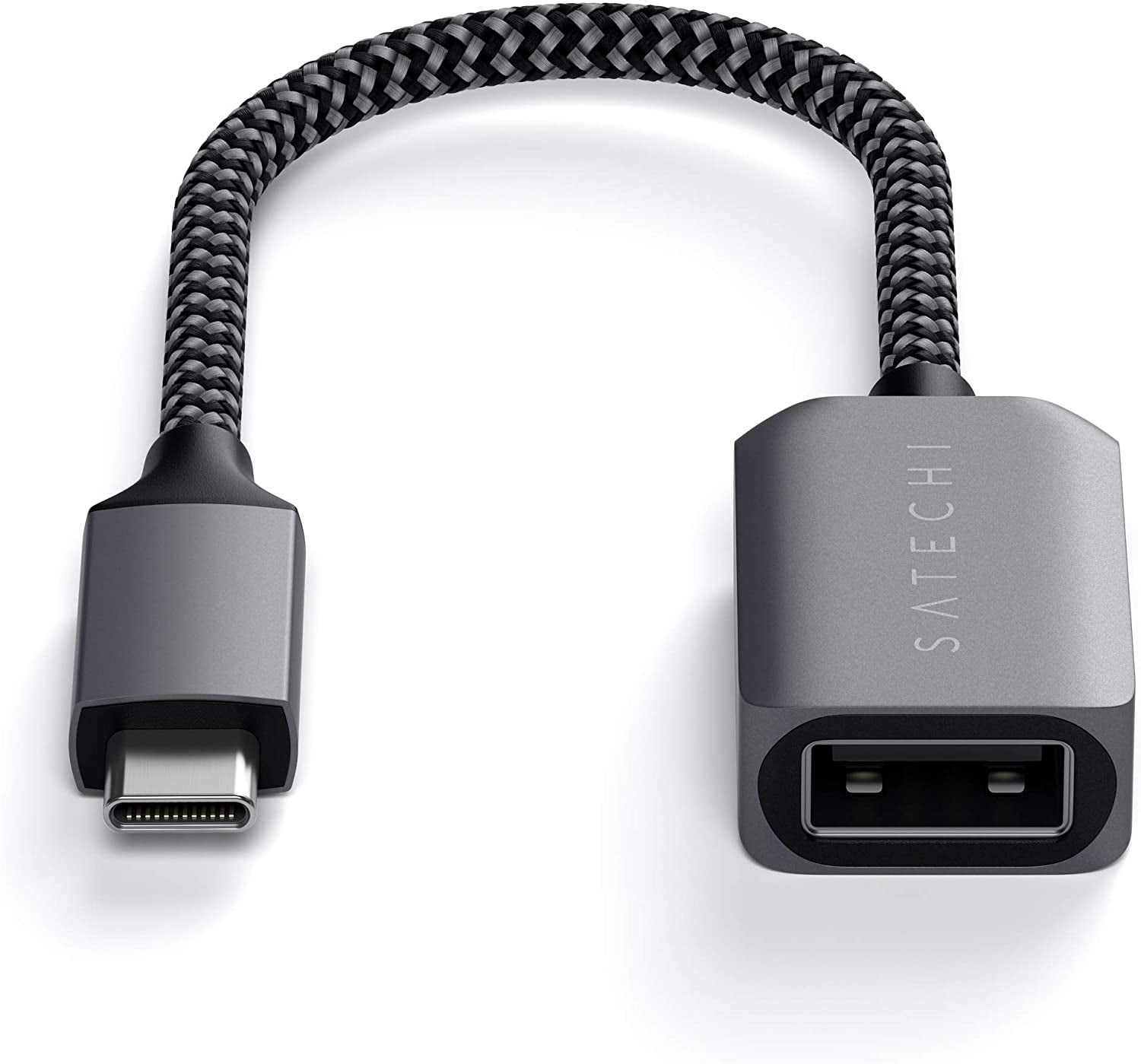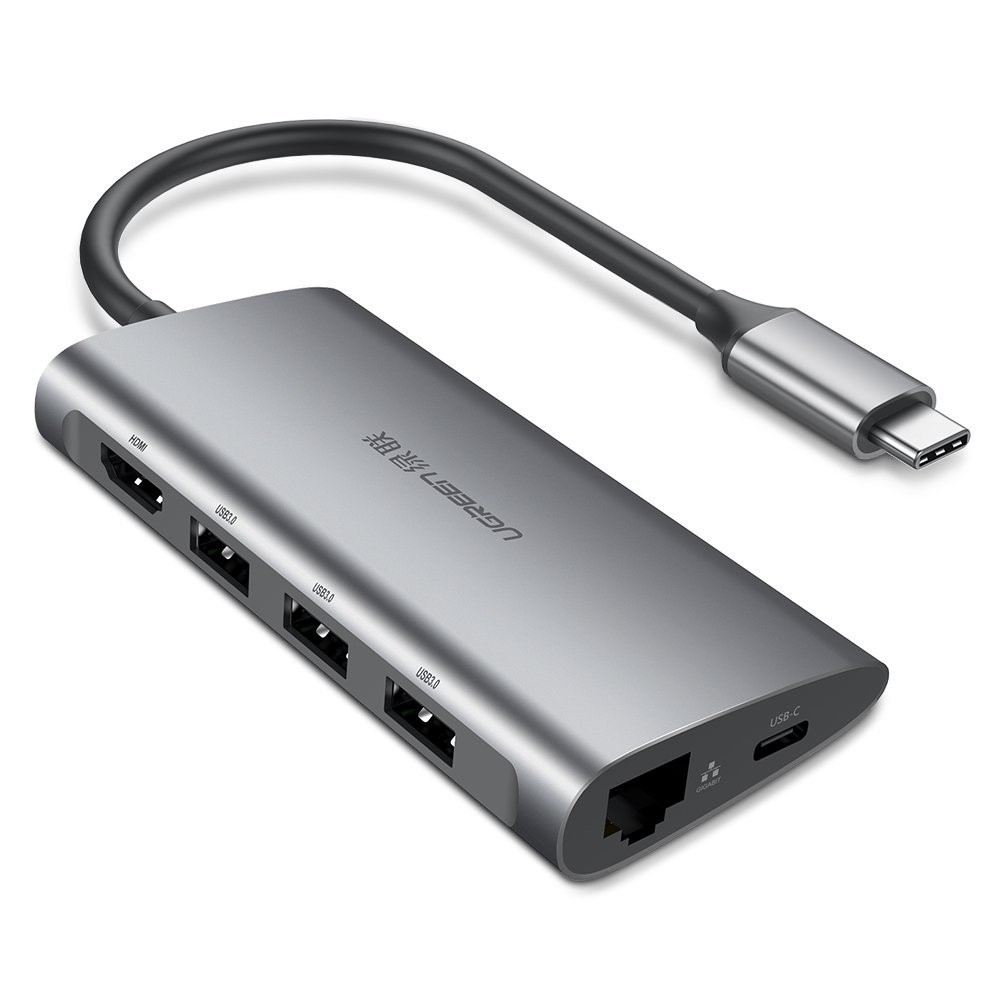

The 140W charger comes in at $99, for example, while the 35W twin-port one costs closer to two dollars per watt, at $59.įor many, 200W is overkill. If you compare it with Apple’s chargers, then the company variously charges more or less than $1/W, depending on the model. Prices & conclusionsĪt $200, the UGreen 200W GaN charger is an expensive power brick! But that pricing actually works out at one dollar per watt.

MACBOOK USB ADAPTER PRO
The maximum 65W output is suitable for smaller MacBooks, but I also found that it was enough to fully power my M1 Max 16-inch MacBook Pro for everyday usage.Īs for the travel adapter aspect, the company says it is compatible with more than 200 countries. The device is primarily intended for on-the-go charging while travelling, for topping up batteries in airport lounges, and powering one or two devices on board a plane, for example.
MACBOOK USB ADAPTER FULL
Actual outputs depend on the mix of power sockets used, but you can get the full 65W if using only the high-power USB-C socket 45W and 15W and various other combinations. Of course, the same disclaimer applies as to the UGreen charger: the power ratings shown are all maximums.

OneWorld65 GaN charger & travel adapter Look & feel With only the MacBook and iPad connected, to ensure C1 had the full 100W available to it, it recharged from 10% to full in less than 90 minutes. In practice, I’ve been able to comfortably charge and simultaneously use MBP, iPad, and iPhone, with the Watch on charge too.

However, the MacBook Pro only hits that 96W maximum draw under an extremely demanding load. Now, in theory, I can’t do all that – because if I use four ports, then C1 is limited to 65W, while C2, C3, and C4 are all fine. *5W is enough for fast-charging if the charger supports USB-PD, otherwise 18W is needed. So if you want to extract every last watt from the charger, you’ll need to check carefully whether the mix of devices you want to power is feasible.įor most of us, though, the answer is going to be yes: This one power brick can do it all. UGreen explains all this in a set of illustrations: Use all six ports, and C1 will be limited to 65W, C2 and C3 will each drop to 45W, C4 will fall to 20W – and the two USB-A ports will get old-school 5v at 4A. If you plug anything into the other ports, the available power to each will fall significantly.įor example, if you plug a third MacBook into USB-C port 3, all three ports will now be limited to a little under 65W. Just plug one each into USB-C ports 1 and 2, and you’ll get 100W on each. The good news is that you absolutely can simultaneously power two 16-inch MacBook Pro models. You’ll have noticed that the total greatly exceeds 200W, so we need to sprinkle a mix of ANDs and ORs in there. While you do have (almost) 200W to play with, and six ports waiting for you to plug in your devices, there’s some important small-print on the bottom. The case material is UBS plastic, but with a pleasant finish, and the weight gives it a real sense of solidity and quality. The front has four USB-C sockets, and two USB-A ones. This is similar to a figure-of-8 socket but with an extra pin for Earth. The rear side has a cloverleaf power socket for the supplied cable. The edges are a darker shade, and look almost black in some lights, but still have a hint of silver. The top of it is a dark-ish silvery-grey, with a small UGREEN logo and tagline. Looks-wise, it has a low-key design which I personally like. This is getting on for twice the weight of Apple’s 96W power brick – but then this thing does deliver twice the power, and six times the number of ports. Normally I’d start with the look, but the most notable first impression in this case is the feel – or, more precisely, the weight! This thing weighs 1.14 pounds, which is something of a shock when you pick it up, as the compact device looks like it should weigh about half that.


 0 kommentar(er)
0 kommentar(er)
